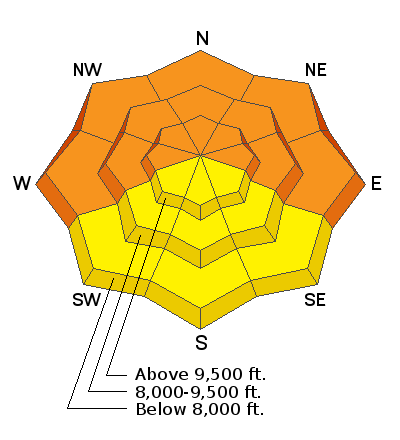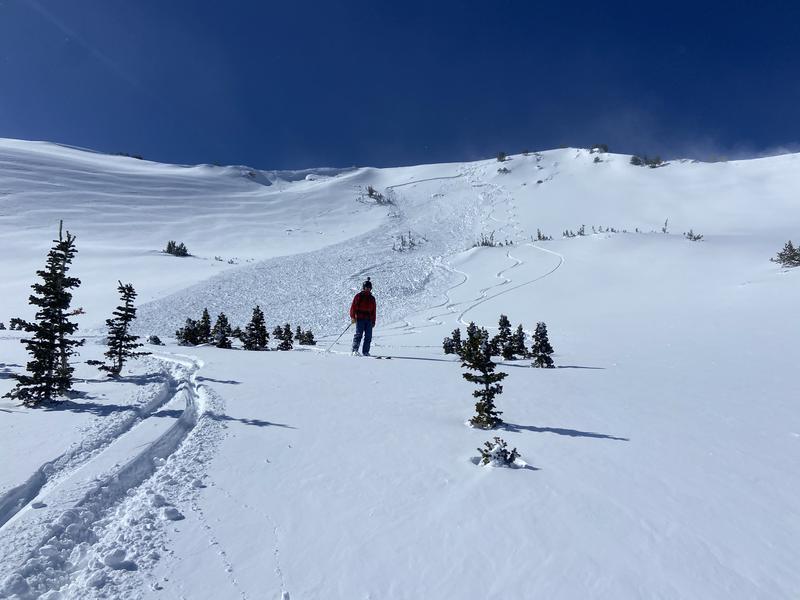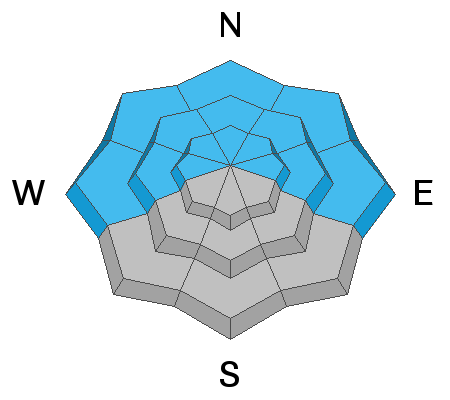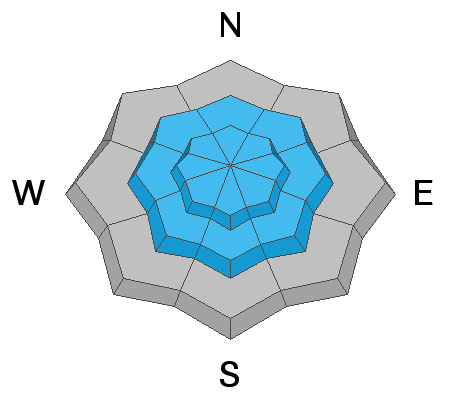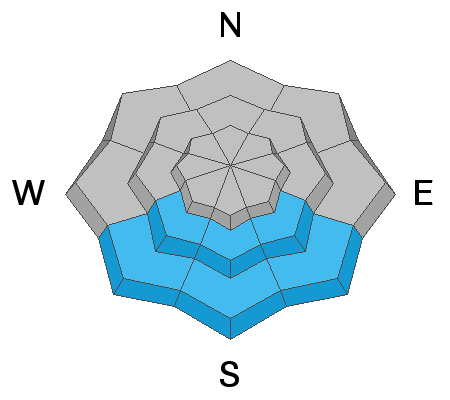This morning, the skies are clear. Mountain temperatures range in the single digits, and winds increased again overnight now blowing from the northwest at speeds of 10-20 mph, gusting into the upper 20s across mid-elevations and gusting into the mid-40s across upper elevation ridgelines. A few areas reported a final dusting of snowfall through the morning before high pressure began to build after that impressive and much-needed storm.
Final Storm Totals
Provo Area Mountains: 8-11" (0.48 H2O)
Today, we should see sunny skies and warming temperatures. Mountain temperatures will top out in the upper 20s and low 30s °F. Winds will remain from the northwest and blow 10-20 mph with gusts into the mid-'30s at mid-elevations and in the 40's across the upper elevation terrain.
The next system is expected to move through the area beginning Sunday. However, this will be a much more fast-moving system in nature, which means it could lack mositure.
In the past 24hrs, there was one human-triggered avalanche reported within the Provo area mountains.
A party of skiers triggered a soft slab avalanche on the Southeast face of Silver Lake Peak. About 10 turns in they triggered an avalanche 18" deep and 150' wide on a southeast aspect at 10,600'. No one was caught or carried in this avalanche. Find the full observation
HERE.Photo from the Silver Lake Peak avalanche (Tyler V)
Across the Central Wasatch over the past 48 hours
- Avalanche Lambs Canyon - Mt. Aire zone - 2 separate natural avalanches, 20" and 1000' wide, 20" and 400' wide, NW Aspect, 7600', 7800', both appeared to happen naturally failing on the PWL
- Avalanche Big Cottonwood Canyon, Mineral Fork - Lower/Mid East Facing, 2' deep and 100' wide. NE Aspect, 8200'. 1 person was caught and carried. Failing on the January/February PWL.
- Avalanche Big Cottonwood Canyon, Mineral Fork - Lower East Facing, 2' deep and 100' wide. NW Aspect, 8100'. Intentionally triggered, failing on the January/February PWL.
- Avalanche Big Cottonwood Canyon, Greens Basin - Exit to Spruces, 2' deep and 30' wide. N Aspect, 7800'.
- Avalanche Big Cottonwood Canyon, Beartrap - entrance gully, 3-5" deep and 20' wide.
- Avalanche Millcreek Canyon - Little Water - near big water yurt, 2' deep and 70' wide, N Aspect, 7700', failing on the January/February PWL
- Avalanche Big Cottonwood Canyon - Little Water Peak near Firewater - 20" deep and 600', N Aspect, 9300', failing on the January/February PWL

